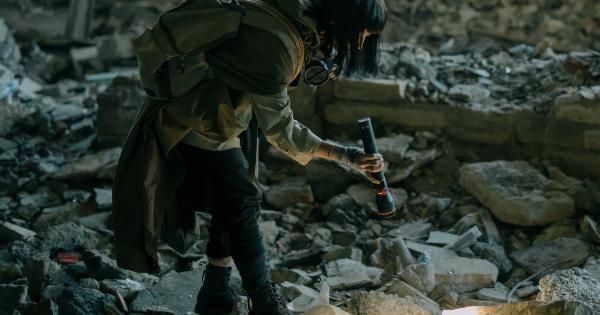Blindness is a devastating condition that affects millions of people worldwide. It restricts not only their ability to see the world around them but also their independence and overall quality of life.
However, advancements in technology have brought about new hope for individuals with vision loss. One such breakthrough is the Argus II Retinal Prosthesis System, a life-changing device that provides assistance to the blind.
The Argus II Retinal Prosthesis System
The Argus II Retinal Prosthesis System is a revolutionary invention that aims to restore some visual capabilities to individuals who have lost their sight due to certain retinal conditions.
Developed by Second Sight Medical Products, this device consists of a tiny camera, a transmitter mounted on a pair of glasses, and an implantable artificial retina.
How the Argus II Works
When a person with the Argus II system looks at an object or a scene, the camera in the glasses captures the visual information. This information is then wirelessly transmitted to the implant, which is surgically placed on the retina.
The implant stimulates the remaining healthy cells in the retina, bypassing the damaged ones. These cells send electric signals to the brain’s visual cortex, which the user interprets as visual perception.
Eligibility and Implantation Procedure
The Argus II system is primarily designed for individuals with retinitis pigmentosa, a genetic eye disease that leads to the progressive degeneration of the retina’s photoreceptor cells.
Candidates for the device must have functional inner retina cells and a history of prior functional vision. The implantation procedure involves surgical placement of the retinal implant and subsequent activation and calibration of the device.
Benefits of the Argus II
The Argus II Retinal Prosthesis System offers several significant advantages to individuals with visual impairments:.
- Improved Perception of Light and Motion: The device can provide users with the ability to perceive light and motion, enabling them to navigate their surroundings more safely.
- Enhanced Independence and Quality of Life: By using the Argus II system, blind individuals can regain a certain level of independence and perform daily activities with greater ease.
- Expanded Communication Opportunities: The device allows users to better interpret facial expressions and gestures, facilitating social interactions and improving communication.
- Ability to Recognize Shapes and Objects: Although the resolution is limited, the Argus II enables users to distinguish basic shapes and objects, aiding in object recognition and orientation.
- Customization and Adaptability: The system can be tailored to each individual user, with the ability to adjust brightness, contrast, and zoom levels according to personal preferences and needs.
Real-Life Success Stories
The Argus II Retinal Prosthesis System has transformed the lives of many individuals affected by blindness. Here are a few inspiring success stories:.
John’s Journey to Regained Vision
John, a 45-year-old man diagnosed with retinitis pigmentosa, had gradually lost his sight and had been living with complete blindness for several years.
Desperate to regain some visual perception, he underwent the implantation procedure for the Argus II. Following the surgery, John started to experience remarkable improvements in his daily life. He could now recognize his family members, detect obstacles in his path, and read large-print books with ease.
The Argus II brought back a sense of normalcy and independence to John’s life.
Sarah’s Story: From Darkness to Art
Sarah, a 32-year-old artist, had always been passionate about painting. However, when she lost her sight due to a hereditary retinal disease, her creative outlet seemed forever lost.
After learning about the Argus II system, she decided to undergo the implantation procedure. The device allowed Sarah to perceive colors and shapes again. Translating what she perceived into vibrant artwork, Sarah found a new way to express herself and share her unique perspective with the world.
Challenges and Limitations
Although the Argus II Retinal Prosthesis System has brought hope and improved quality of life to many individuals, it is essential to acknowledge its limitations:.
- Visual Resolution: The device provides a limited level of visual resolution, allowing users to see basic shapes and objects rather than fine detail.
- Learning Curve: Individuals who receive the implant must undergo extensive training to learn how to interpret the visual information provided by the device.
- Device Longevity: The implant’s lifespan is currently limited, and the device may require replacement after several years.
- Cost and Accessibility: The Argus II Retinal Prosthesis System is a costly investment, and its availability may be limited to certain medical centers or regions.
- Surgical Risks: As with any surgical procedure, there are risks involved in the implantation of the retinal prosthesis.
The Future of Visual Prosthetics
The development of the Argus II Retinal Prosthesis System represents a significant milestone in the field of visual prosthetics.
As technology continues to advance, it is likely that future iterations of the device will address some of its current limitations. Researchers are actively working on enhancing visual resolution, improving device longevity, and reducing surgical risks.
Moreover, ongoing studies explore the possibility of extending the use of retinal prostheses to individuals with other forms of vision loss, such as age-related macular degeneration.
Conclusion
The Argus II Retinal Prosthesis System has emerged as a life-changing device for individuals living with blindness.
By restoring some visual perception, it offers a renewed sense of independence, improved communication abilities, and enhanced quality of life. While the device has its limitations, ongoing research and developments hold promise for the future of visual prosthetics.































